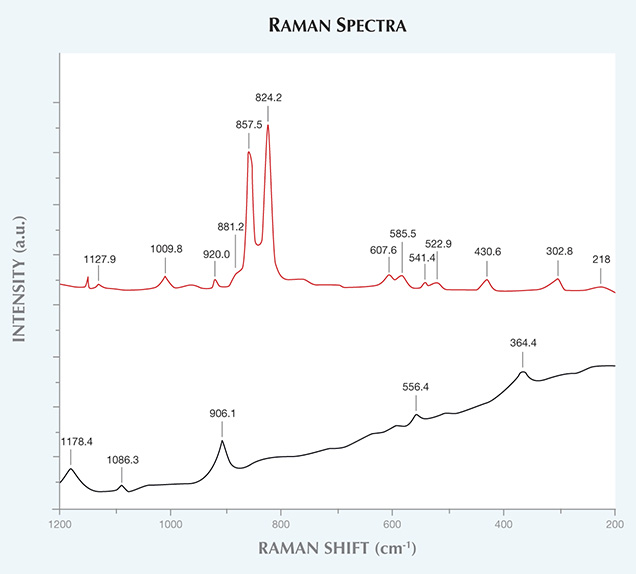Silicon in Natural Type IIa and Type IaB Diamond
Recently, SiV– was detected in the PL spectra (liquid-nitrogen temperature with 633 nm laser excitation) of five diamonds submitted to GIA’s Mumbai laboratory. These 0.31–0.90 ct round brilliants were issued colorless grades of either D or E. Their clarity grades ranged from VVS1 to SI2, where the lower grades arose from the presence of trapped crystalline inclusions.
FTIR spectroscopy revealed that four of the samples were type Ia, with hydrogen-related peaks at 3107 and 1405 cm–1. The remaining sample was type IIa, with no discernible impurity-related IR features. Multi-laser, liquid-nitrogen-cooled PL spectra acquired for the fifth sample were similar to those reported in Breeding and Wang’s 2008 investigation of SiV– in natural diamonds. The latter also showed luminescence at 737, 714.6, 589.8, 557.8/558.2, 554.2, and 550.3 nm, in addition to NV0/– (575 and 637 nm, respectively) and 3H (503.4 nm). This SI2 sample contained several inclusions with intact crystalline faces, identified by Raman spectroscopy as olivine, consistent with the former investigation (figure 1, top). Through gemological and spectroscopic observations, it was possible to distinguish this natural type IIa diamond from Si-containing type IIa CVD synthetics.

Figure 1. Room-temperature Raman spectroscopy (830 nm laser excitation) identified the different inclusions in the type IIa, SI2 (top) and type IaB, SI1 (bottom) natural diamonds containing silicon. The former spectrum is consistent with olivine, while the latter is attributed to spessartine garnet.
The type Ia diamonds studied by Breeding and Wang all contained A-aggregates and varying concentrations of B-aggregates (type IaA±B). In the present group of type Ia diamonds, only B-aggregates were detected (pure type IaB). With the exception of the 737 nm feature, the type IaB diamonds’ PL spectra did not include any of the spectroscopic features characteristic of Si-containing type IaA±B diamonds. An emission line at 664.3 nm was detected in all the type IaB specimens, however. These samples also showed emissions from NV0/– (575 and 637 nm, respectively), H3 (503.2 nm), and H4 (495.9 nm), where H4 was remarkably strong for three of the diamonds. Interestingly, the diamond with the lowest H4 concentration was also distinctly included (SI1 clarity). Raman spectroscopy identified the inclusions as spessartine garnet (figure 1, bottom). Breeding and Wang also reported the presence of garnet in Si-containing diamonds. The presence of olivine and garnet inclusions in natural diamonds containing SiV– has been suggested to indicate that they crystallized in an area of mixed-composition peridotite in the upper mantle.
These results emphasize that the detection of SiV– in diamonds does not unequivocally signify CVD synthetic origin. Nevertheless, careful analysis of spectroscopic features and crystalline inclusions can be used to separate these natural diamonds and their synthetic counterparts.



